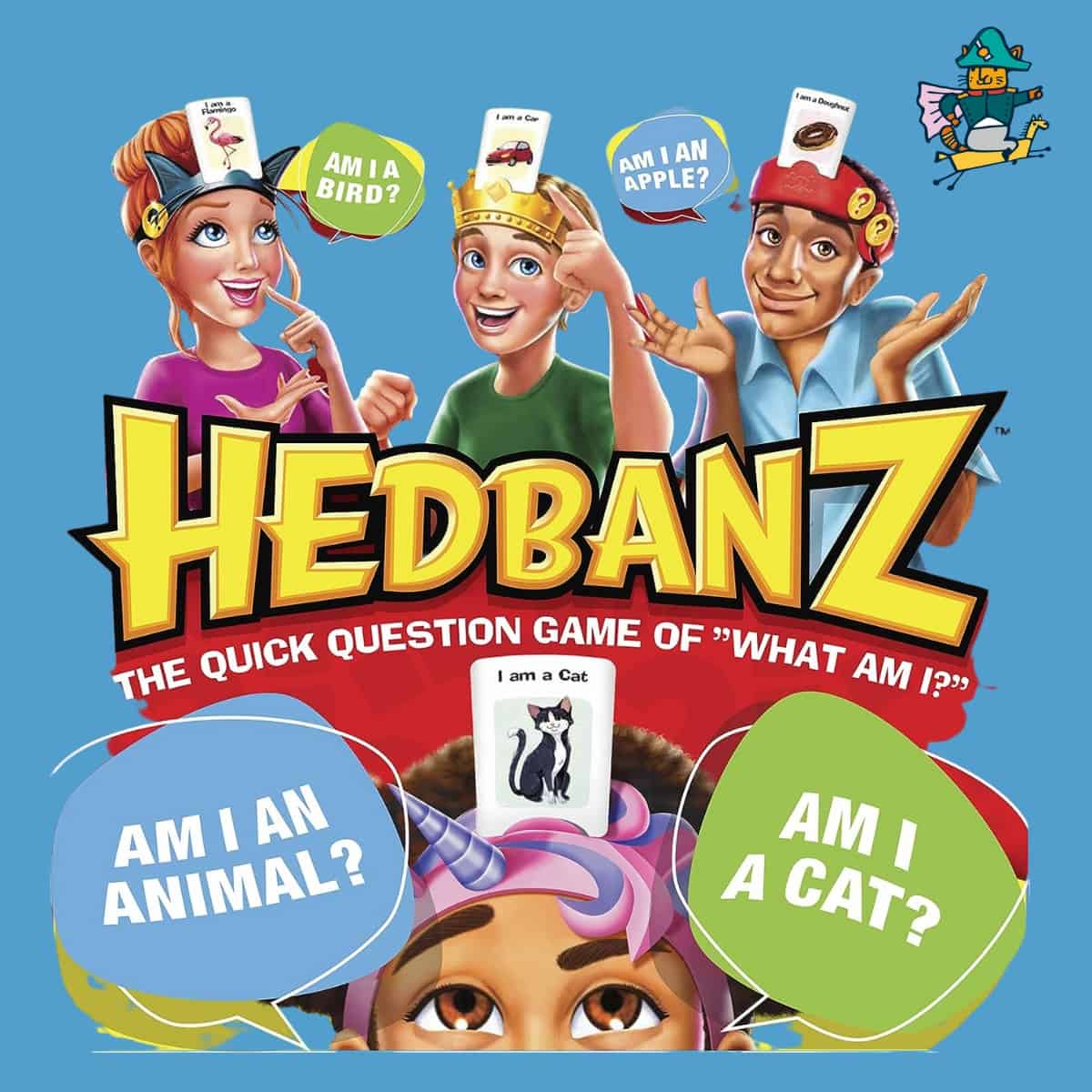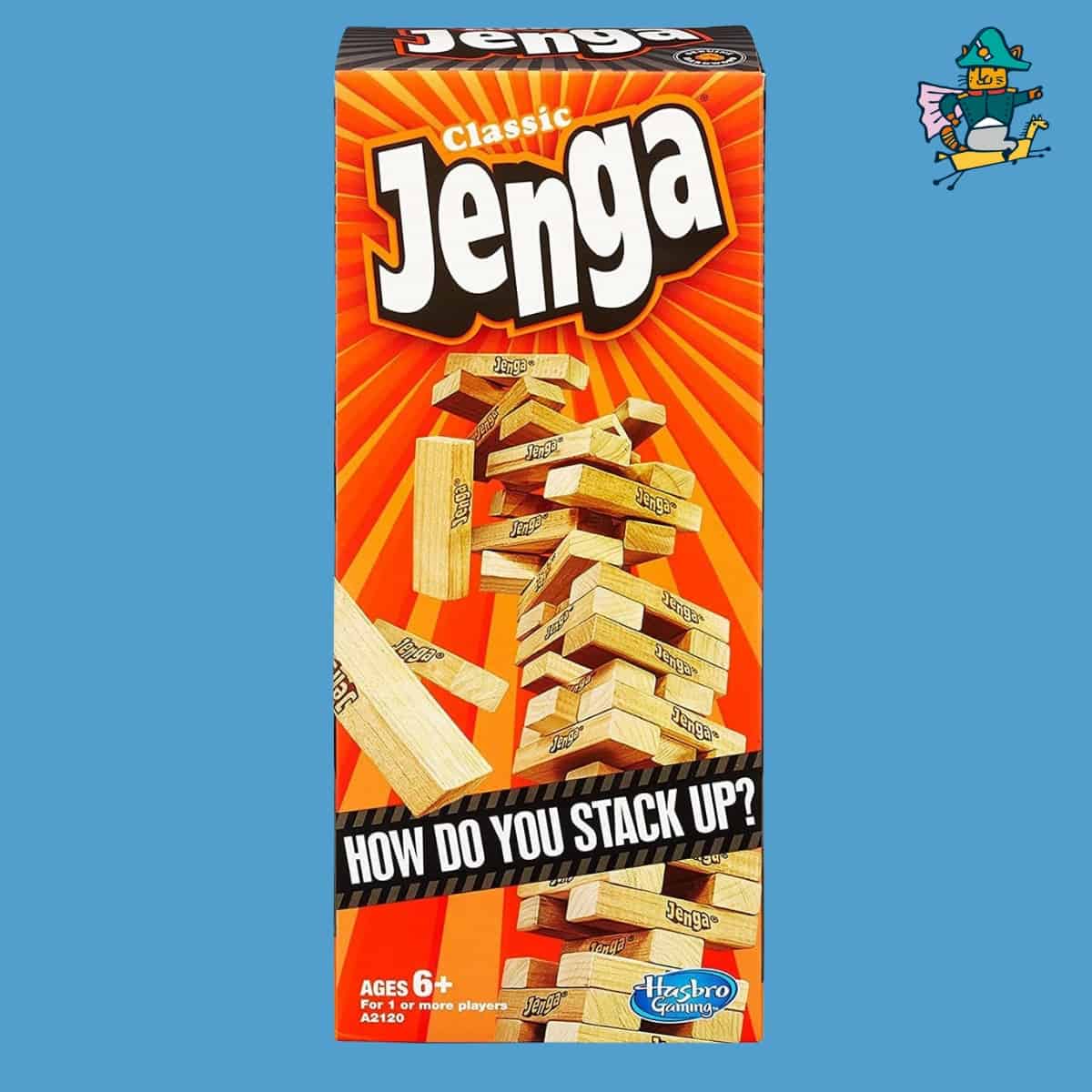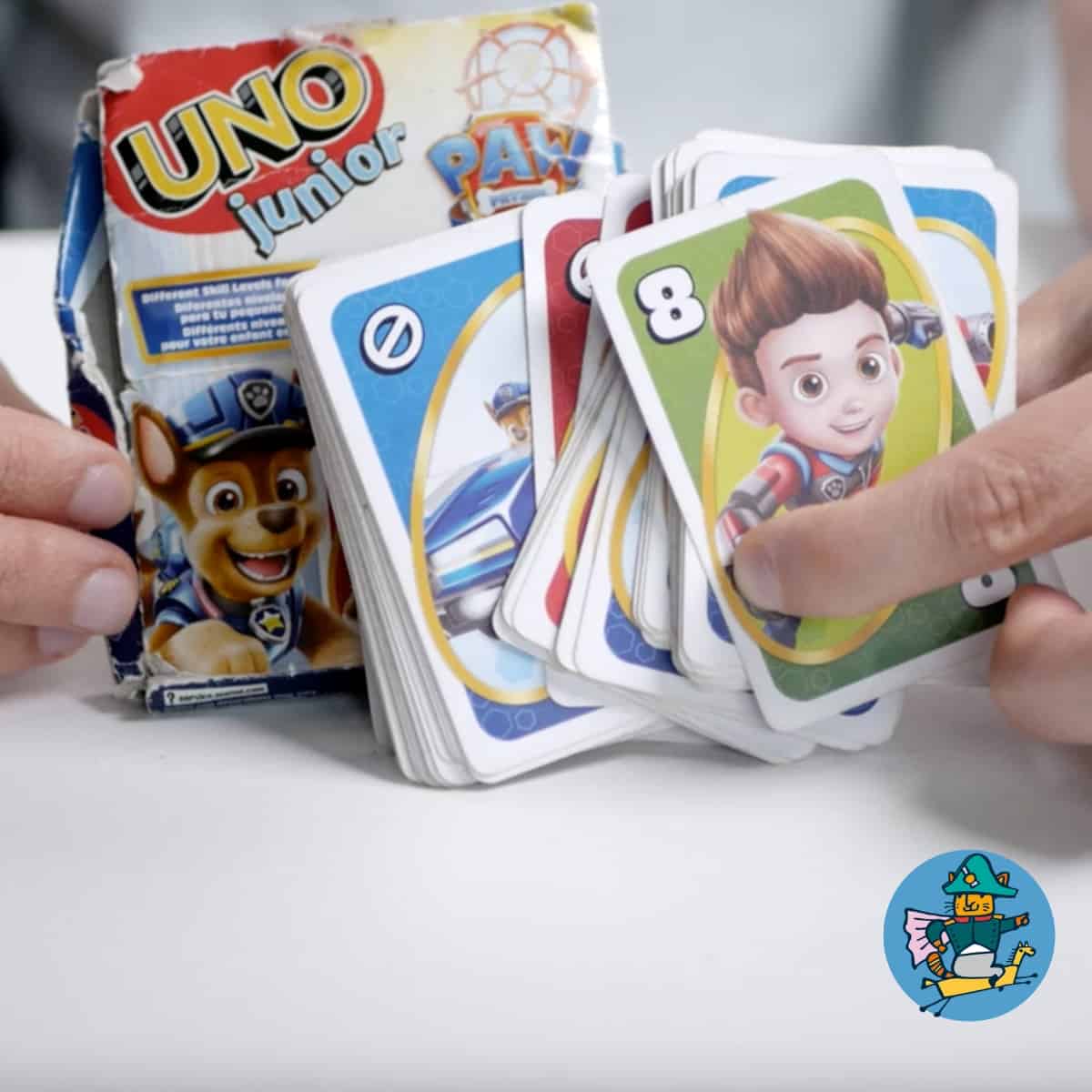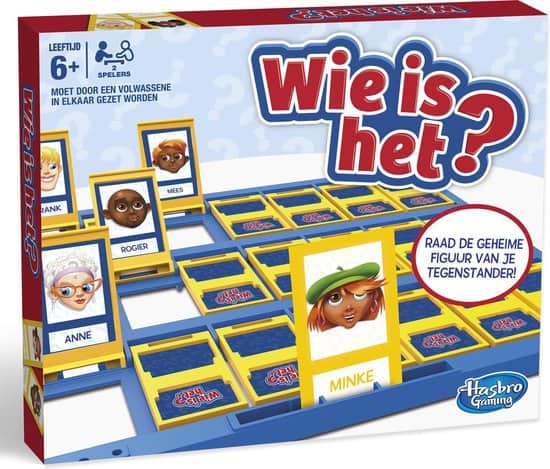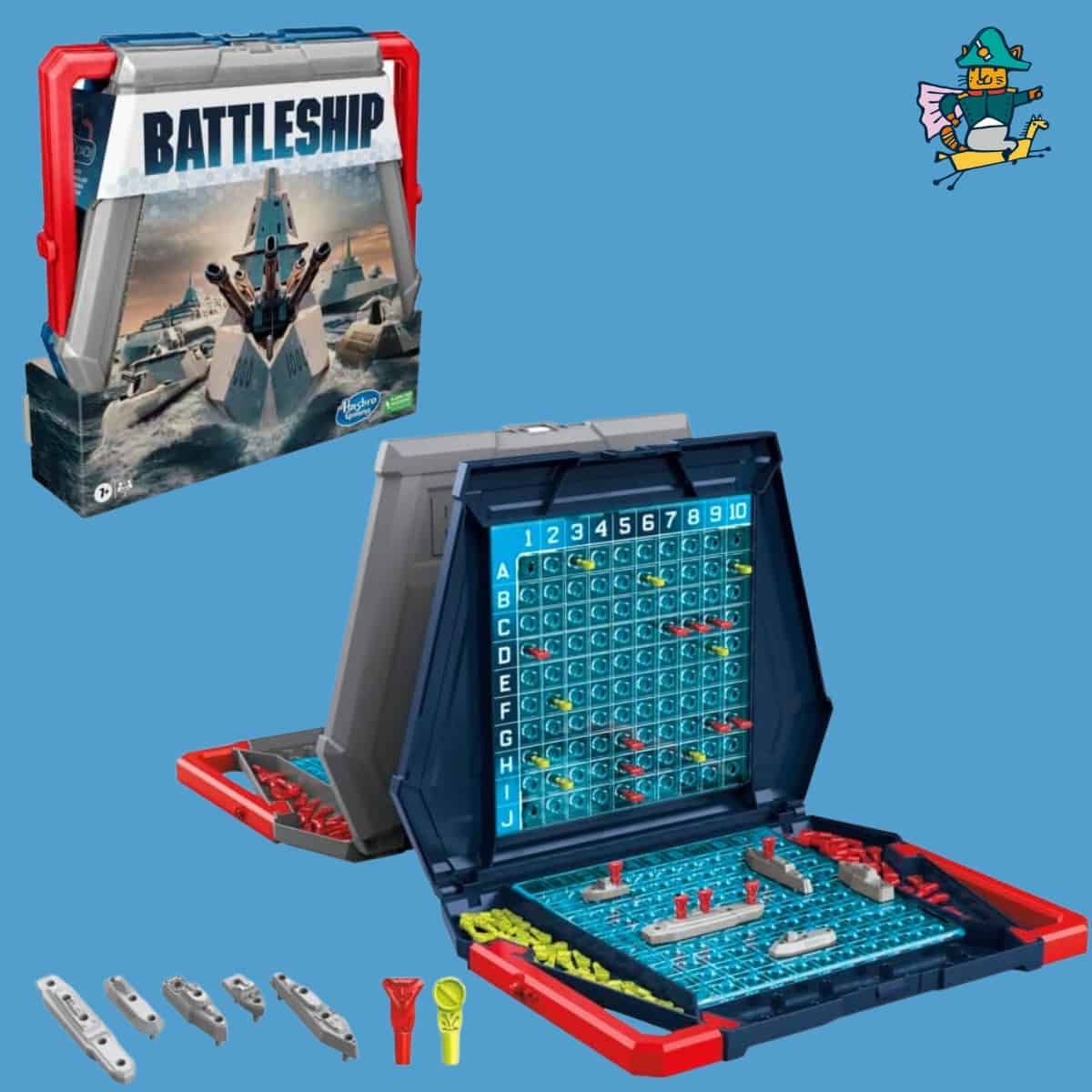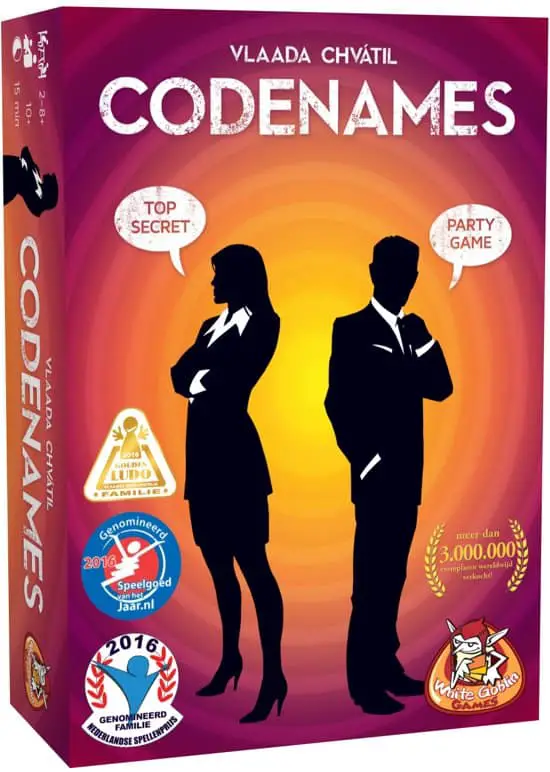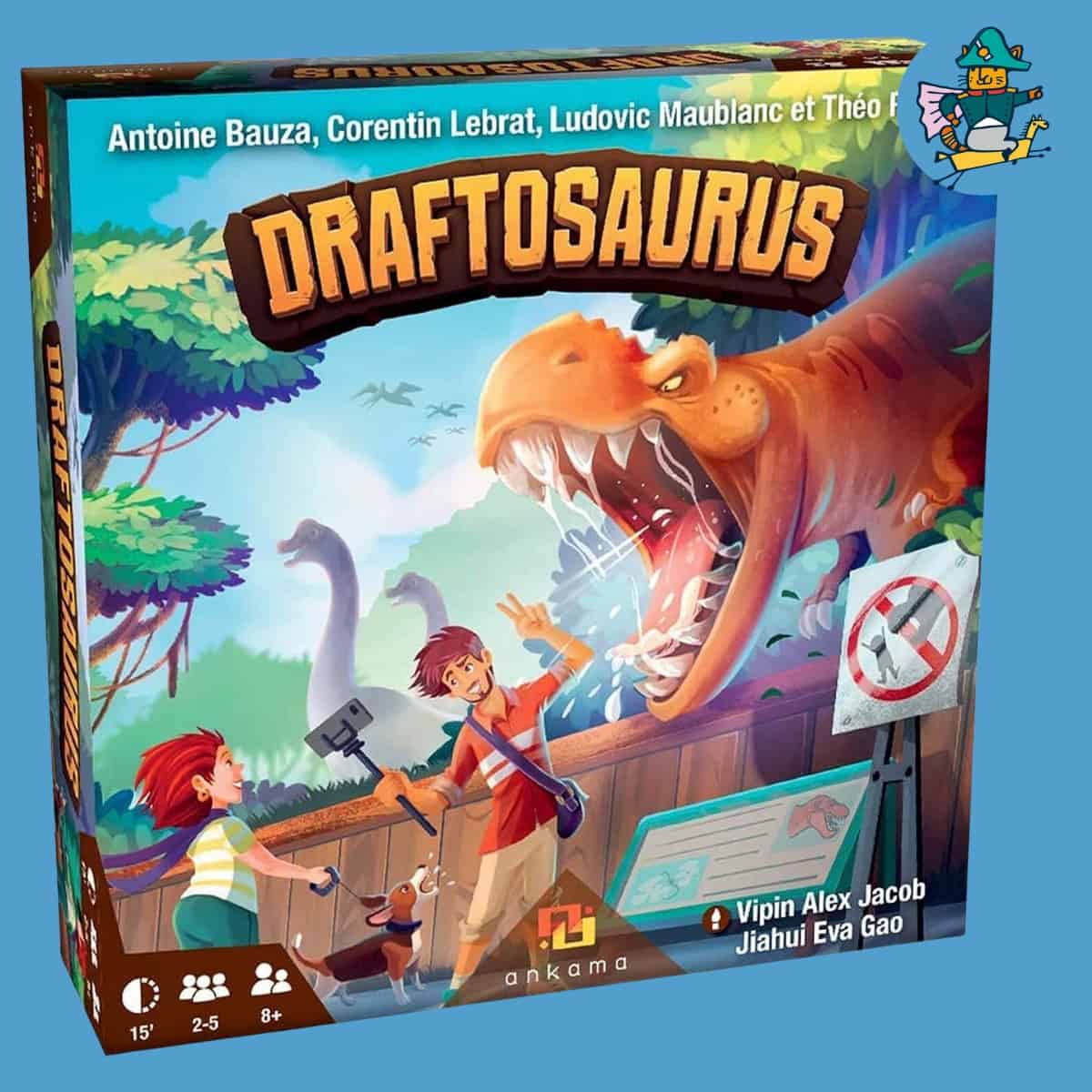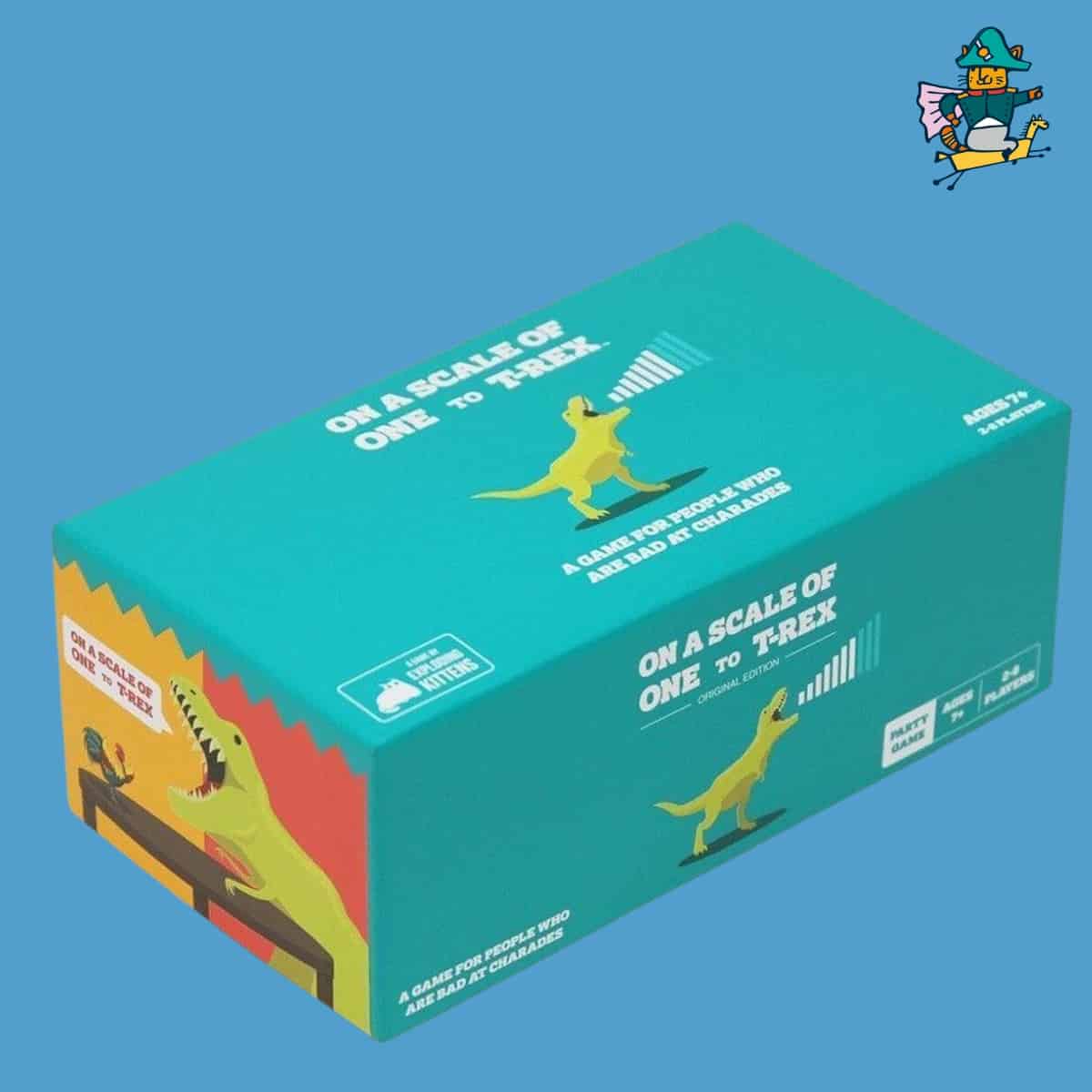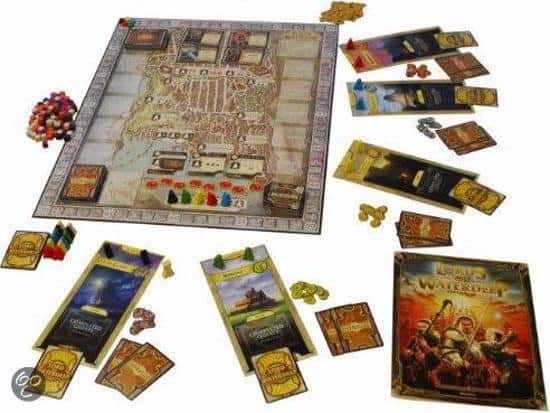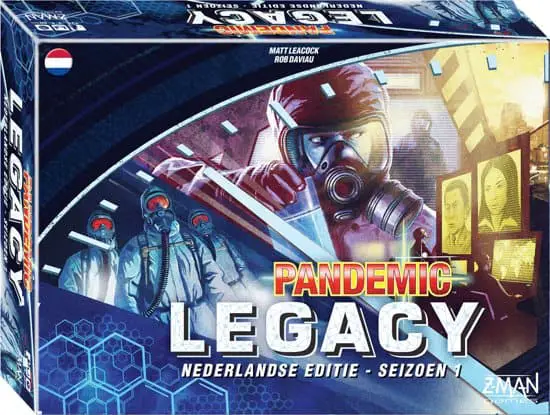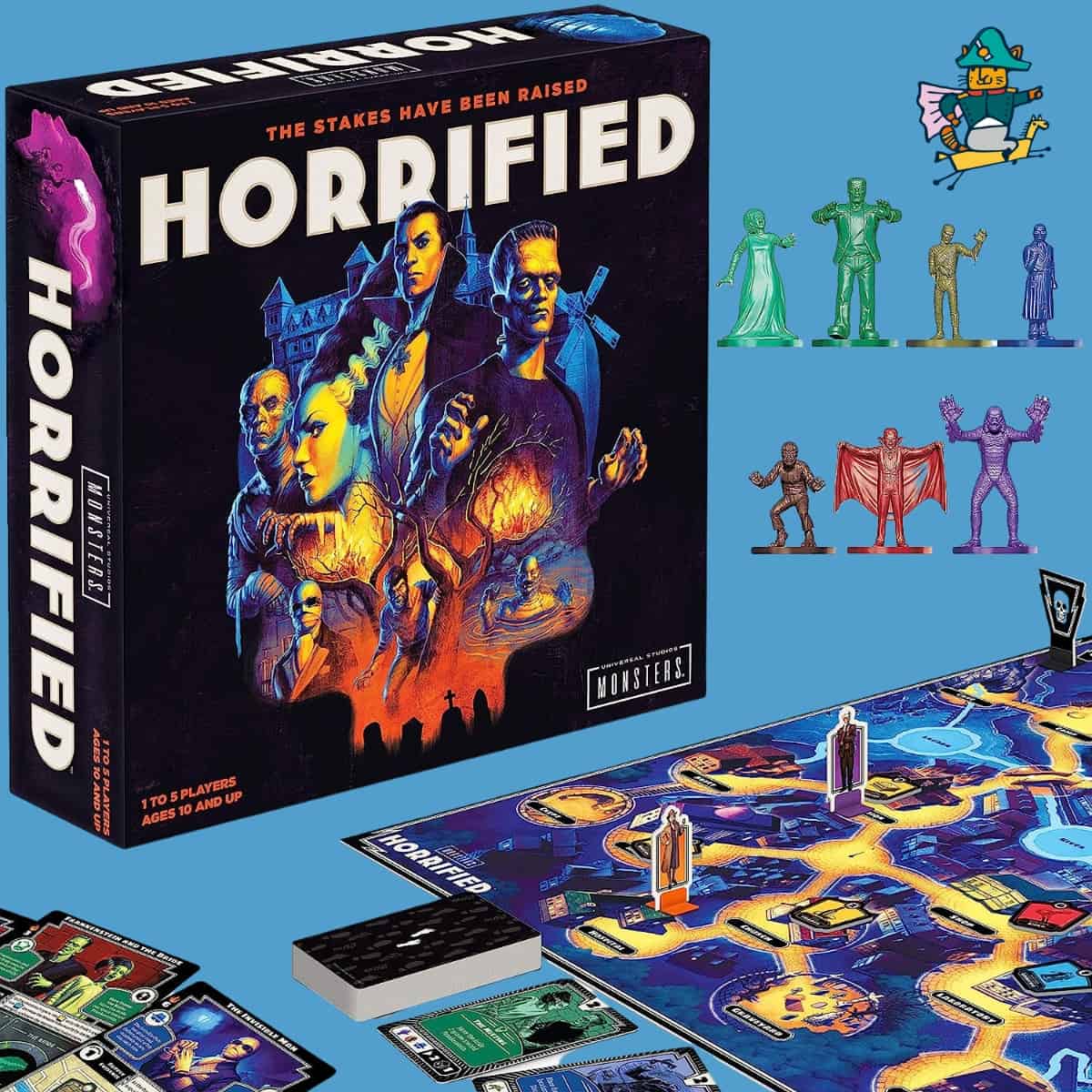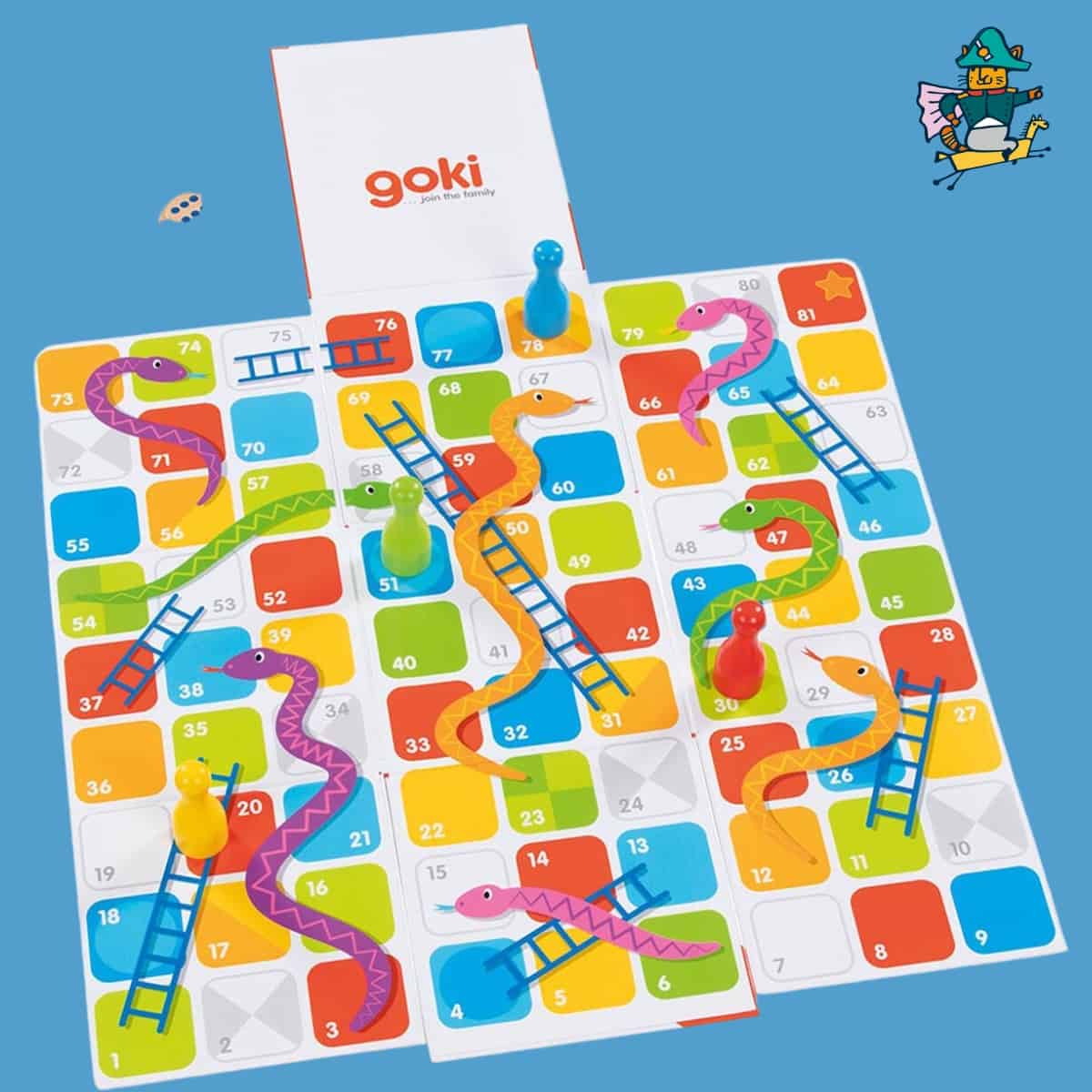12 exciting board games for learning social skills
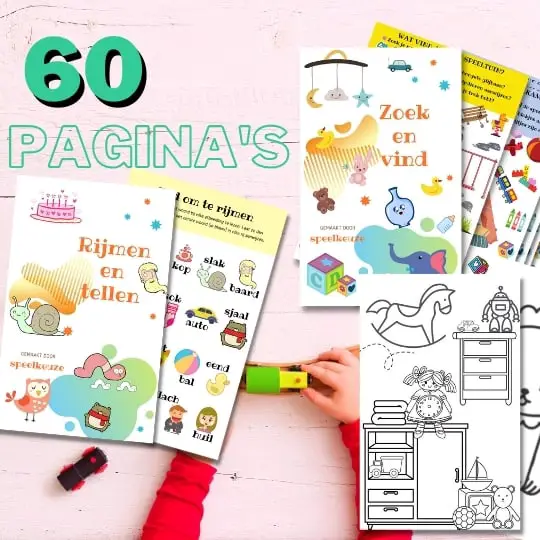
Always something to do for the holidays or rainy day?
Play Choice now has the ultimate activity book collection, with over 60 pages of fun coloring pages and educational puzzles.
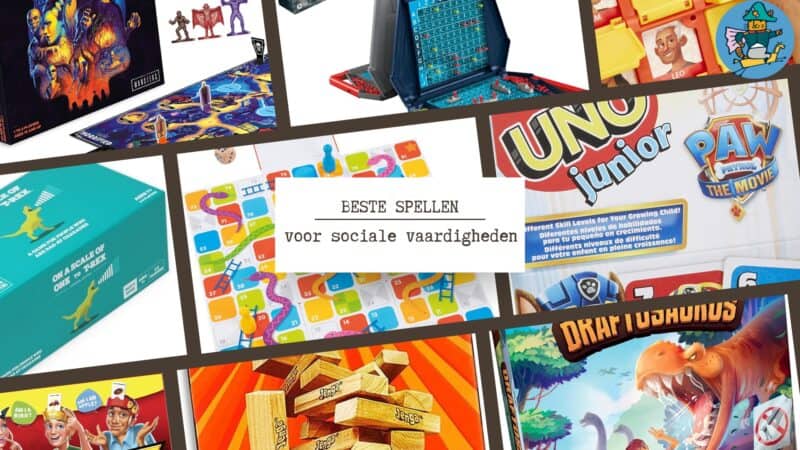
Social skills are the skills that children learn to get along well with others. This involves developing behavior, communication and qualities that ensure that children can express themselves, give their opinions and take others into account.
It is important that children develop these skills because they can help them deal with problems and present themselves better in a group and one of the best ways to learn it is by playing games.
One of the best ways to train your social skills is to improve your communication skills, and Hedbanz by Spin Master is the perfect example of this. You have to guess who you are so ask questions, and the others have to come up with answers in response.
There are of course many more games to practice different social skills, as you can see in the list below.
Best game for communication skills
The ease of use of Hedbanz is very high. Tie on a band, put a card in it and you have to guess what you are.
Best game for expressing feelings
The play value of Jenga is high due to its ease of use and how it manages to generate tension.
Best game to learn self-confidence
The interactivity is high because all kinds of things happen with these bullying cards and it is fun with the 2 of us, but also with a larger group.
Best simple board game to learn turns
The box says 6+, but it is often also suitable for slightly younger children, it is easy to explain and gets going quite quickly, plus is of course ideal for vacation.
Best game to learn listening
Very easy to use, especially this collapsible edition, you can play it anywhere there is a table.
Best social group game
Most party games are all about fun and bluffing. Codenames is a clever design that also throws a bit of strategy and skill into the mix.
Best game that teaches sharing
Grab the right dinosaurs to fill your theme park and pay attention to what your opponents are doing. This teaches fair sharing and good sportsmanship, which is also what makes the game so much fun.
Best game for perspective taking
Everyone can already see what you are portraying, those cards are open. Where you can earn points is by guessing at what intensity someone is working.
Best RPG for Social Skills
It's draped in a loose Dungeons and Dragons theme for beginners, plus there are amazing ways to beat your opponents.
Best game for socializing and working together
Best for: …those who prefer collaboration over competition.
Best game to learn to ask for help
In Horrified, a group of villagers must defeat 2 to 4 monsters at a time, so you will have to communicate with each other about which ones you tackle together.
Best social-emotional game for autism
The interactivity and versatility are not that high, but that makes it suitable for small children and children with disabilities, such as autism.
We rank board games by their play quality with our game score based on various criteria such as play value, interactivity, value for money, versatility, awards and materials.
Playing games is essential for the development of social skills in children. They learn to play together, take others into account, take turns and express emotions. Board games are not only fun, but also valuable for children's development.
Below you will find the 12 best board games for learning social skills.
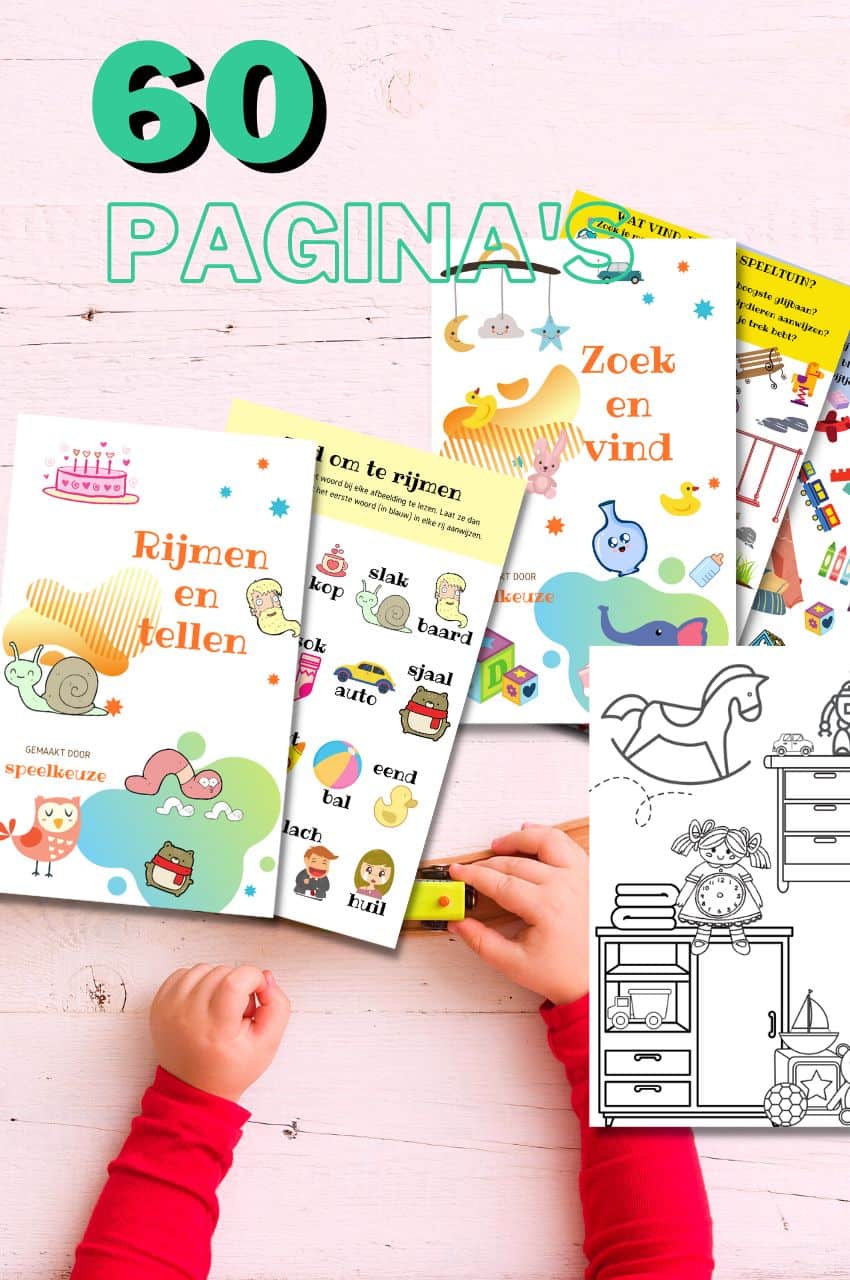
From toddler to toddler activity book collection
Educational games and coloring pages for 3 to 6 years
Your toddler and preschooler will love this e-book, along with the accompanying printables. He or she can play with it at every stage of development, together with mom and dad.
Buy at Bol.comWhat we discuss in this comprehensive post:
- 1 1. Spin Master Hedbanz – Best game for communication skills
- 2 2. Hasbro Jenga – Best game for expressing feelings
- 3 3. Mattel Uno Junior – Best game to learn self-confidence
- 4 4. Hasbro Who is it? – Best simple board game to learn turns
- 5 5. Hasbro Battleship – Best game to learn listening
- 6 6. White Goblin Games Codenames – Best Social Group Game
- 7 7. Ankama Draftosaurus – Best game for learning to share
- 8 8. Exploding Kittens On a Scale of One to T-Rex – Best game for perspective taking
- 9 9. Dungeons & Dragons Lords of Waterdeep – Best RPG for Social Skills
- 10 10. Z-Man Games Pandemic Legacy – Best game for socializing and collaborating
- 11 11. Ravensburger Horrified – Best game for learning to ask for help
- 12 12. Goki Snakes and Ladders XXL – Best social-emotional game for autism
- 13 How do you choose the right board games?
- 14 How can playing games contribute to learning social skills?
- 15 Are board games good for development?
1. Spin Master Hedbanz – Best game for communication skills
- Anyone can play it
- Nice social interaction
- Not very versatile
-
From: 7 years
-
Best: 8 – 10 years
-
Up to: 12 years
- Material: Plastic
- Theme: Games and puzzles, Party games
- Play mode: Competitive
- Price at time of writing: €19,99 – $12,97
- Durability: None
- Learning objective: Language and communication, Language development
- Storage: Compact
- Intensity: Active
- Playing Time: Longer (10 – 30 min)
- Adaptability: None
The ease of use of Hedbanz is very high. Tie on a band, put a card in it and you have to guess what you are. It couldn't be easier and the band is also easy to attach with studs, just like a cap. The game appeals to the imagination and the social interaction is enormous. The play value could only have been higher if the game was more open-ended. It's a bit more straightforward now.
That doesn't really benefit the versatility either. There is only one way to play the game and it can get a bit repetitive after a while. The interactivity is fine, but not huge. In this game you mainly rely on the other players.
The game itself has not won any awards, but Spin Master has many awards to their name. The materials used are not great, although the plastic of the headbands is quite sturdy.
2. Hasbro Jenga – Best game for expressing feelings
- Exciting stacking game
- Sturdy wooden blocks
- Interactivity could have been higher
-
From: 5 years
-
Best: 6 – 8 years
-
Up to: 16 years
- Material: Wood, Hardwood
- Theme: Games and puzzles, Stacking games
- Play mode: Competitive
- Price at time of writing: €17,95 – $15,97
- Durability: None
- Learning objective: Physical development, Eye-hand coordination
- Storage: Compact
- Intensity: Active
- Playtime: Short (<10 min)
- Adaptability: None
The play value of Jenga is high due to its ease of use and how it manages to generate tension. It is a competitive game, but the play value could have been higher if there was more social interaction. The tension is the only element that provides social interaction, because the game itself is simply taking turns.
In Jenga you have to take turns removing a block from the tower without it falling over. The one who topples the tower loses.
The interactivity could be a little higher, but the collapse of the tower immediately after your action still provides sufficient connection with the game elements. It is also quite versatile, because we also use the blocks for play, for example, and we have also made our own version of it.
The original Jenga is made from hardwood blocks and while it doesn't have sustainable production, it's a lot better than plastic board games.
Many therapists use Jenga to help children talk about their feelings. To do this, you can write a different emotion on each block, for example sad, grumpy or happy. When someone draws a block, ask the children to describe a moment when they experienced this emotion.
The printable below can help you turn the Jenga game into one of the best games for expressing feelings.
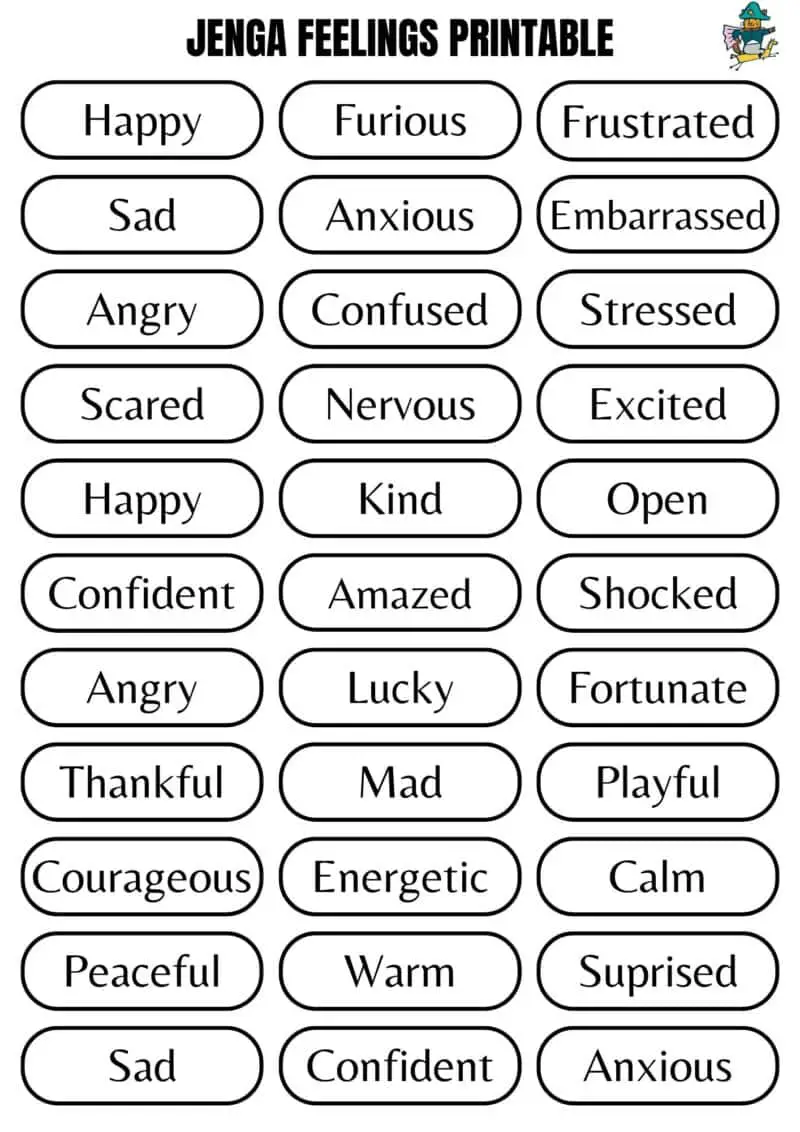
3. Mattel Uno Junior – Best game to learn self-confidence
- 3 difficulty levels so it can grow with you
- Combination of luck and strategy
- Poor quality box
-
From: 3 years
-
Best: 3 – 6 years
-
Up to: 7 years
- Material: Paper
- Theme: Games and puzzles, Card games
- Play mode: Competitive
- Price at time of writing: €8,79 – $9
- Durability: None
- Learning objective: Emotional and social development, Turn taking
- Storage: Compact
- Intensity: Low
- Playtime: Short (<10 min)
- Adaptability: None
The play value of Uno Junior is great. The ease of use is high, because you can play at three difficulty levels so that it remains fun for children of different ages. This also makes it more versatile than many other card games. Social interaction is also high because you are bullying each other.
In Uno you have to be the first to get rid of your cards to win. The cards are in different colors with different numbers and you can only throw the same color or number. There are also bullying cards that can upset others.
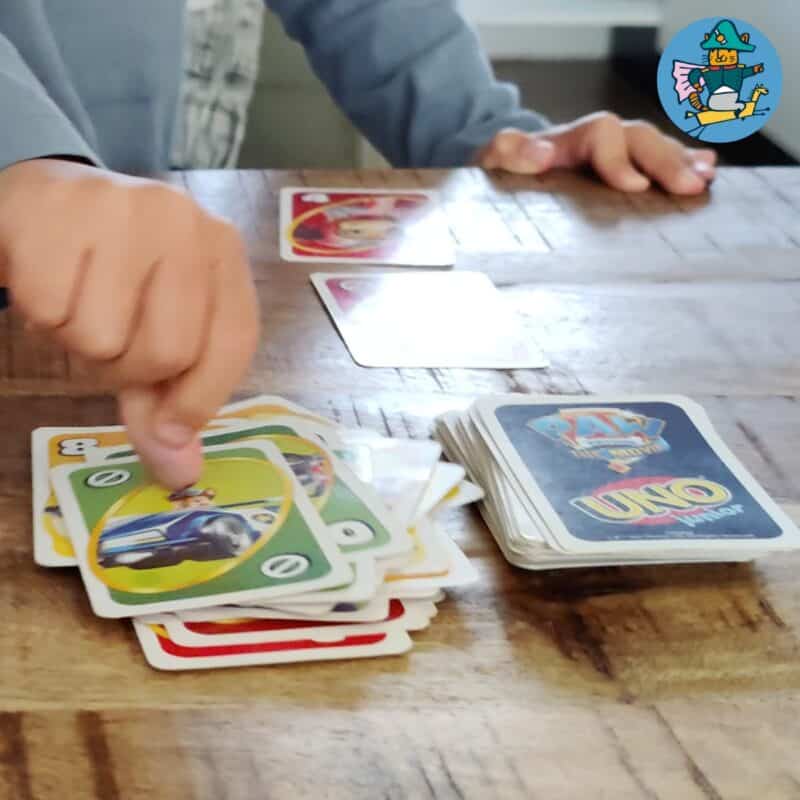
The interactivity is high because all kinds of things happen with these bullying cards and it is fun with the 2 of us, but also with a larger group. Because every turn is an opportunity to make a small profit, it is a good game to build self-confidence, and even if you don't let your children win on purpose, they can win the game every now and then.
The material of the packaging is very poor, made of cheap cardboard, which makes it difficult to take the cards with you, but the value for money in terms of playing fun is enormous.
4. Hasbro Who is it? – Best simple board game to learn turns
- Kids want to play it again and again
- Teaches language and cognitive ability
- Game board quality is not great
I used to enjoy it a lot and it remains a good classic for two people.
The box says 6+, but it is often also suitable for slightly younger children, it is easy to explain and gets going quite quickly, plus is of course ideal for vacation.
And anyone familiar with the original version of this game will appreciate that this updated version is very different again.
The game has been improved by also using people of different ethnicities and different skin colors, a simple classic that finally added all the beautiful skin tones and different faces to the game.
5. Hasbro Battleship – Best game to learn listening
- Handy carrying case that you can easily take with you
- Exciting strategy game
- Not much interaction
-
From: 6 years
-
Best: 7 – 10 years
-
Up to: 16 years
- Material: Plastic
- Theme: Games and puzzles, Strategy
- Play mode: Competitive
- Price at time of writing: €18,01 – $16,84
- Durability: None
- Learning objective: Cognitive development, Logical reasoning
- Storage: Collapsible
- Intensity: Low
- Playing Time: Longer (10 – 30 min)
- Adaptability: None
Zeeslag is very easy to use, especially this edition which is collapsible and easy to carry. This makes it extremely replayable, you can play it anywhere there is a table. The subject appeals to the imagination and this is also reflected in the enthusiasm with which children play with it, as if their ships are really going down.
In naval battle you have to sink the opponent's ships. First you place your ships strategically, then you have to take turns guessing a square where an opponent's ship may be located. When you have sunk all the ships you win the game.
So you have to listen carefully to the other person and be able to wait your turn, which is good for your communication skills. The interactivity is not enormous and the social interaction is limited to shouting commands back and forth, but it is still an exciting game.
- A word game anyone can play
- Can scale well with any number of players
- Has quiet moments
- Every now and then an arbitrary ending
Features
- Players: 2-8
- Time to set up: 2 minutes
- Play time: 15 minutes
- Level: easy
- Age: 10 +
Most party games are all about fun and bluffing. Codenames is a clever design that also throws a bit of strategy and skill into the mix.
One player comes up with one-word clues that lead his teammates to certain word cards arranged in a grid.
The clue can be anything: it can rhyme with the target, or form a compound word, or be a synonym.
The team does not know that and the person giving the clue is of course not allowed to say anything; so be prepared to go crazy as you observe your team reasoning itself further and further away from the correct answer!
It's more difficult to find clues than it initially seems, which can lead to longer moments of silence. Not the most fun game for your drinking night.
But it also makes things that much more exciting, because wrong guessing can award points to the other team, or even result in an immediate loss.
Codenames vs Codenames pictures
The most notable difference between the original game and its remake is that in Pictures there are images instead of words. In this version, the players and their team have to guess different pictures using some word clues, no different from charades or Pictionary.
The different Codenames variants can be played separately without needing a basic set.
7. Ankama Draftosaurus – Best game for learning to share
- Teaches logical reasoning and sharing
- Nice game dynamics where you have to change your strategy every time
- The interactivity with the game is low
-
From: 7 years
-
Best: 8 – 10 years
-
Up to: 12 years
- Material: Wood, MDF
- Theme: Games and puzzles, Strategy
- Play mode: Competitive
- Price at time of writing: €21,99 – $16,89
- Durability: None
- Learning objective: Cognitive development, Logical reasoning
- Storage: Compact
- Intensity: Low
- Playing Time: Longer (10 – 30 min)
- Adaptability: None
Draftosaurus is extremely easy to play and the rules are clear. Still, there is a lot of opportunity for strategy and ways to play, which really benefits the open ending. The social interaction scores high and the dinosaur theme also appeals to the imagination. This all greatly enhances the play value.
In Draftosaurus you have to find the right dinosaurs to fill your theme park. This means you have to pay close attention to what your opponents are doing and try to win the right ones for yourself. This teaches fair sharing and good sportsmanship, which is also what makes the game so much fun.
The interactivity between the players is great because you influence each other's game. This also makes every game different and the versatility great. It is not without reason that the game has won several awards such as the Gra Roku Children's Game of the Year and the American Tabletop Early Gamers.
The board is made of sturdy cardboard and the playing pieces are made of wood, no plastic is used and this ensures that the game will last a long time.
8. Exploding Kittens On a Scale of One to T-Rex – Best game for perspective taking
- Unique way of hinting
- Very fun to play
- At some point you've had all the cards
-
From: 7 years
-
Best: 7 – 12 years
-
Up to: 16 years
- Material: Cardboard
- Theme: Games and puzzles, Party games
- Play mode: Competitive
- Price at time of writing: €26,99 – $19,89
- Durability: None
- Learning objective: Emotional and social development, Perspective taking
- Storage: Compact
- Intensity: Energetic
- Playing Time: Longer (10 – 30 min)
- Adaptability: None
The play value is enormous. Good social interaction, appeals to the imagination and is very open-ended. In fact, it's easy to play and take anywhere. The value for money is a little less because it's actually just cards you get, but you ultimately pay for the development of the game and the fun of playing.
In On a Scale of One to T-Rex everyone plays hints at the same time, a hints for people who are not good at hints, as they say. Everyone can already see what you are portraying, those cards are open. Where you can earn points is by guessing at what intensity someone is working.
This new form of portrayal not only makes it fun with a unique twist, but it also makes you put yourself in the other person's shoes, so it's great to see it from their perspective. What is high intensity for you may not be high intensity for someone else.
This game itself has not won any awards yet, but Exploding Kittens has received awards many times for their innovative and fun games.
- Fantastic mix of strategy, luck and interaction
- Different in every play
- Can be exceptionally complicated
- Colossal nerd factor
Features
- Players: 2-5
- Time to set up: five minutes
- Playtime: 60-120 minutes
- Level: average
- Age: 12 +
Judgement
You place pawns to gain resources and deny them to others, it is a popular playing style in hobby board games.
However, many titles are more like spreadsheets than real games.
Lords of Waterdeep is a glorious exception. It's draped in a loose Dungeons and Dragons theme for beginners, plus there are amazing ways to beat your opponents.
You can send them on pointless quests, steal their resources and block their strategies.
I've seen sessions where after the game nobody wanted to talk to each other. Add the Undermountain extension and it's even worse.
This interaction adds to the already demanding strategies and keeps the game from stagnating.
Players themselves add abilities to the options offered by building new spaces with new powers to place their bricks. Range varies by game, so there is no set route to victory.
You will be on the (tactical) edge of your seat again with every game, at least until one of the other players pushes you off.
If you're worried this fantastic game might cost you your friends, but there's an iOS version to try on your child's family iPad first.
Best for:… Those looking for a deeper experience (which may cost you your friends)
- Promotes team building in players
- Game design makes every game unique
- Lacks the imagination of playing against a human opponent
Features
- Players: 2-4
- Time to set up: five minutes
- Play time: 60 minutes
- Level: average
- Age: 13 +
Judgement
Legacy is now the most popular concept in board game gaming. It involves players physically changing their copy of the game depending on how each session goes:
- you write on the blackboard
- destroys a few components
- adds new ones from sealed packages
and at the end your game board is unique.
Not only a representation of your current game, but also previous times you played it, requiring different strategies from the other games.
That's why this game is available in red and blue versions: they play the same, but you can have two different created variations if you wish. And now even a yellow version has been added.
The original pandemic was a popular collaborative game. Everyone worked as a team to achieve a joint victory, trying to save the world from a horrible disease.
Each player had a specific role with special abilities and only by merging them could they achieve a victory.
You can watch that old version on iOS or Android if you want. Without the creativity of human opposition, however, it would soon be stale. Adding Legacy took it to the next level and it is now the top rated game.
Best for: ...teens who prefer collaboration over competition
11. Ravensburger Horrified – Best game for learning to ask for help
- Different monsters make every game different
- High degree of interaction and collaboration
- Difficult to get through
-
From: 9 years
-
Best: 10 – 14 years
-
Up to: 16 years
- Material: Plastic
- Theme: Games and puzzles, Track game
- Play Mode: Cooperative
- Price at time of writing: €29,99 – $37,52
- Durability: None
- Learning objective: Emotional and social development, Collaboration
- Storage: Normal
- Intensity: Low
- Playtime: Extended (30+ min)
- Adaptability: None
The game is a bit complicated to understand at first, but you quickly get used to it. This means there are many opportunities to win and determine a strategy. Social interaction is also very high because you have to play together. You must ask each other's help to defeat one of the monsters.
In Horrified, a group of villagers must defeat 2 to 4 monsters at a time, so you will have to communicate with each other about which ones you tackle together. The monsters appear on the game board and will do more and more intense evil until you defeat them.
Because there are 7 monsters to choose from, the game is always different and very versatile. The game is very open-ended because nothing is set in stone and the interaction with the game board and each other is very high, which all leads to a high play value.
12. Goki Snakes and Ladders XXL – Best social-emotional game for autism
- Simple rules and easy for young children
- Theme appeals to the imagination
- In the end it's just luck of the dice
-
From: 3 years
-
Best: 4 – 6 years
-
Up to: 8 years
- Material: Cardboard
- Theme: Games and puzzles, Track game
- Play mode: Competitive
- Price at time of writing: €25,21 – $38,33
- Durability: None
- Learning objective: Emotional and social development, turn taking
- Storage: Collapsible
- Intensity: Low
- Playing Time: Longer (10 – 30 min)
- Adaptability: None
A great game to play on a Sunday afternoon and such a race to the top really appeals to the imagination. This XXL version ensures that everyone can participate. The box folds up as a game board so you can easily take it with you. It is a bit difficult to fold it, so the ease of use could have been higher. It also doesn't have much open-ended play, so the play value could have been higher than it is now.
In snakes and ladders you have to get up to the end. If you land on a ladder space, you can go up quickly, but if you land on a snake space, you will fall back down. This makes it exciting until the end.
The interactivity and versatility are not that high in this game, but that makes it suitable for small children and children with disabilities, such as autism. It is a gentle way to learn good sportsmanship and disappointment (or winning sportsmanlike) in front of others.
How do you choose the right board games?
Board games are judged by their quality of play. We have therefore developed a game score, a quantifiable assessment that we use when ranking games in our reviews. This is based on the following components, each with its own weight.
- Play value (35%)
- Interactivity (20%)
- Price/ quality (20%)
- Versatility (15%)
- Awards (5%)
- Materials (5%)
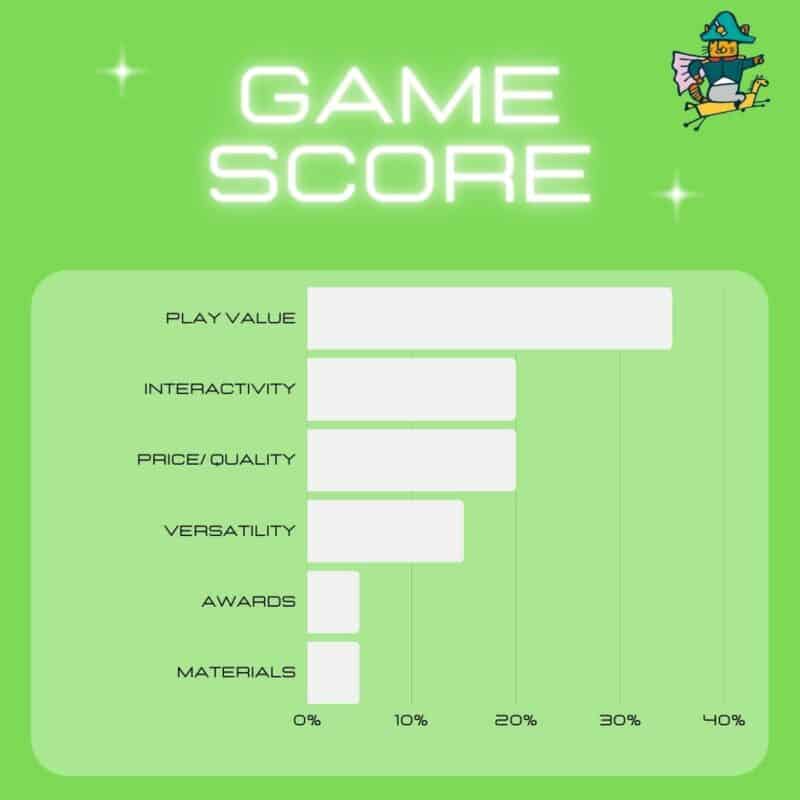
The play value, together with the interactivity, is the most important thing. The games should be fun to play and interactivity is also an important part of this.
The play value here is also the ease of use, degree of open-endedness, imagination and social interaction. When a game is easy to use and understand or has a logical learning curve and there are many options to give it your own direction, it will be played longer with a higher quality of game.
Interactivity is the extent to which the game involves the players and immerses them in it. This is very important for the quality of play and how often children will return to the game to play it more often.
The value for money is a score based on the ratio of the quality of the game to the price of the item. This ratio determines how much value you get for your money, in play value and in intrinsic quality of the item such as the materials used.
The versatility is how many directions you can take the game in. If there is only one possible outcome and the game always follows the same steps, then the versatility is low. If there are multiple outcomes possible, multiple ways of playing, multiple ways to win and, for example, multiple characters that influence the game, then the versatility is high.
Awards for the game are also important. This indicates whether it has been recognized by reputed institutions to ensure that it brings the right play value or sometimes educational value.
Materials are understood to mean all materials incorporated into the product. These are the main components such as cardboard or plastic for a game board or real wooden playing pieces.
Playing is an important part of the development of social skills. Your child learns by playing how he or she should interact with others. By playing together, your child learns to take others into account and take turns.
Your child learns a lot from your exemplary behavior. If you interact positively with others, your child will adopt this behavior. In addition, rules are important for the development of social skills. A game situation is perfect for showing exemplary behavior.
It is important that your child learns to deal with emotions and set boundaries. By regularly talking about feelings and emotions, your child learns how to deal with them. Games, such as Jenga combined with printed feelings cards, can also help with this.
There are different types of social skills that children can learn. Below are some well-known examples:
- Listen to others and respect their opinion
- Have confidence and dare to be yourself
- Showing emotions and expressing feelings
- Dealing with criticism and feedback
- Collaborate and help each other
- Have a conversation and ask questions
- Considering others and their feelings
- Resolve conflicts and discuss issues
How do children learn with social-emotional learning (SEL)?
Social Emotional Learning (SEL) is a methodology that helps children better understand emotions, feel emotions fully, show empathy, use learned behaviors to make positive and responsible decisions, create frameworks to achieve goals, and build positive relationships. build.
SEL is an important skill for students of all ages as it helps them understand and manage their emotions, which can help them perform better in school and in life. It can also help resolve conflicts and improve relationships.
Are board games good for development?
Yes, board games are good for development. They can help children develop a variety of skills, including math, reading and fine motor skills, as well as cognitive and social skills.
The proper board games can help children learn from failure in a safe environment and increase their ability to cope with setbacks. The study “Using a board game to reinforce learning” by Yoon, B., Rodriguez, L., Faselis, C., & Liappis, A. (2014) also emphasizes that board games are innovative educational tools that can improve active learning.

Always something to do for the holidays or rainy day?
Play Choice now has the ultimate activity book collection, with over 60 pages of fun coloring pages and educational puzzles.
Joost Nusselder, the founder of Speelkeuze.nl is a content marketer, father and loves trying out new toys. As a child he came into contact with everything related to games when his mother started the Tinnen Soldaat in Ede. Now he and his team create helpful blog articles to help loyal readers with fun play ideas.
